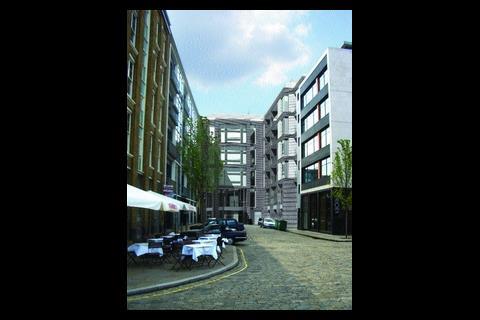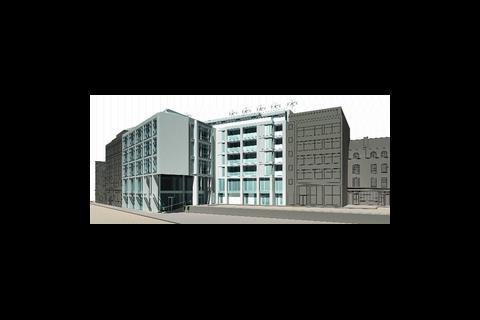A mixed-use proposal in Clerkenwell is designed to use as little energy as possible and to supply a big chunk of those minimal needs from renewable sources on site.
Renewable energy technologies will meet a fifth of the energy needs for a £10 million mixed development in central London if the scheme wins planning permission.
The site is a former petrol station in Clerkenwell. Richards Partington Architects’ design for Azure Property will contain retail and office space plus eight residential units in what the architect terms a “hybrid design” to sit within the historic streetscape. The offices face onto the busy Clerkenwell Road and a retail strip wraps around the ground floor to link this facade with a second frontage containing the residential accommodation on the quieter St John’s Square.
The design embraced energy reduction from the outset. Highly insulated facades, designed for better U-values than the minimum required by the Building Regulations, ensure fabric heat loss is kept to a minimum, while recessed balconies on the apartments and a brise-soleil on the office facade minimise heat gains.
Energy use will be further reduced by efficient lighting, low fan power and high plant seasonal efficiency according to Marcos DeCastro, an associate at RYB:Konsult, the scheme's services engineer.
As well as minimising energy use, the aim is to supply 20% of the building’s power needs from renewable sources. The scheme includes 46 m2 of roof-mounted solar collectors, which will meet 50% of the annual hot water demand. A closed-loop ground source heat pump will provide up to 45% of peak heating and 51% of peak cooling to the offices and retail. Heating will be topped up using a gas-fired condensing boiler, while a roof-mounted dry cooler connected to the water loop will provide the remaining 49% of peak cooling. Ten wind turbines will augment the other renewable energy sources.
The combined impact of all the renewable technologies will be to reduce the annual energy requirements of the site from 630 MWh to 501 MWh, or 20.5% of the total energy requirement. This equates to a 14.5% saving in carbon dioxide emissions.
Source
Building Sustainable Design
























No comments yet